On Zwicker tones and musical pitch in the likely absence of phase locking corresponding to the pitch
- PMID: 27794303
- PMCID: PMC5436623
- DOI: 10.1121/1.4963865
On Zwicker tones and musical pitch in the likely absence of phase locking corresponding to the pitch
Abstract
It was assessed whether Zwicker tones (ZTs) (an auditory afterimage produced by a band-stop noise) have a musical pitch. First (stage I), musically trained subjects adjusted the frequency, level, and decay time of an exponentially decaying diotic sinusoid to sound similar to the ZT they perceived following the presentation of diotic broadband noise, for various band-stop positions. Next (stage II), subjects adjusted a sinusoid in frequency and level so that its pitch was a specified musical interval below that of either a preceding ZT or a preceding sinusoid, and so that it was equally loud. For each subject the reference sinusoid corresponded to their adjusted sinusoid from stage I. Subjects selected appropriate frequency ratios for ZTs, although the standard deviations of the adjustments were larger for the ZTs than for the equally salient sinusoids by a factor of 1.0-2.2. Experiments with monaural stimuli led to similar results, although the pitch of the ZTs could differ for monaural and diotic presentation of the ZT-exciting noise. The results suggest that a weak musical pitch may exist in the absence of phase locking in the auditory nerve to the frequency corresponding to the pitch (or harmonics thereof) at the time of the percept.
Figures
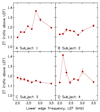
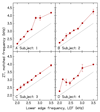
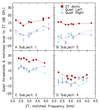
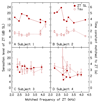

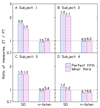

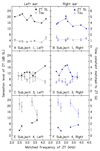



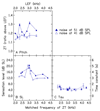


Similar articles
-
On musical interval perception for complex tones at very high frequencies.J Acoust Soc Am. 2021 Apr;149(4):2644. doi: 10.1121/10.0004222. J Acoust Soc Am. 2021. PMID: 33940917 Free PMC article.
-
Do Zwicker Tones Evoke a Musical Pitch?Adv Exp Med Biol. 2016;894:419-426. doi: 10.1007/978-3-319-25474-6_44. Adv Exp Med Biol. 2016. PMID: 27080683
-
Pitch discrimination interference between binaural and monaural or diotic pitches.J Acoust Soc Am. 2009 Jul;126(1):281-90. doi: 10.1121/1.3132527. J Acoust Soc Am. 2009. PMID: 19603884 Free PMC article.
-
Neurophysiological correlate of the auditory after-image ('Zwicker tone').Audiol Neurootol. 1996 May-Jun;1(3):161-74. doi: 10.1159/000259196. Audiol Neurootol. 1996. PMID: 9390799
-
Neural correlates of the pitch of complex tones. I. Pitch and pitch salience.J Neurophysiol. 1996 Sep;76(3):1698-716. doi: 10.1152/jn.1996.76.3.1698. J Neurophysiol. 1996. PMID: 8890286
Cited by
-
Noise edge pitch and models of pitch perception.J Acoust Soc Am. 2019 Apr;145(4):1993. doi: 10.1121/1.5093546. J Acoust Soc Am. 2019. PMID: 31046377 Free PMC article.
-
On musical interval perception for complex tones at very high frequencies.J Acoust Soc Am. 2021 Apr;149(4):2644. doi: 10.1121/10.0004222. J Acoust Soc Am. 2021. PMID: 33940917 Free PMC article.
-
Survey of temporal coding of sensory information.Front Comput Neurosci. 2025 Jul 2;19:1571109. doi: 10.3389/fncom.2025.1571109. eCollection 2025. Front Comput Neurosci. 2025. PMID: 40672999 Free PMC article.
References
-
- Akeroyd MA, Summerfield AQ. A fully-temporal account of the perception of dichotic pitches. Brit J Audiol. 1999;33:106–107.
-
- Bleeck S, Ives T, Patterson RD. Aim-Mat: The auditory image model in MATLAB. Acta Acust Acust. 2004;90:781–787.
Publication types
Grants and funding
LinkOut - more resources
Full Text Sources
Other Literature Sources

